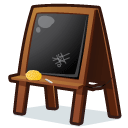 Google/YouTube has its own Copyright Workshop with a well-linked lesson on the fine line between Fair Use and copyright infringement. Also check:
Google/YouTube has its own Copyright Workshop with a well-linked lesson on the fine line between Fair Use and copyright infringement. Also check:
Chilling Effects“aims to help you understand the protections that the First Amendment and intellectual property laws give to your online activities.” (A clearinghouse project of the Electronic Frontier Foundation and Harvard, Stanford, Berkeley, University of San Francisco, University of Maine, George Washington School of Law, and Santa Clara University School of Law clinics.)
The Stanford Fair Use Project “(the ‘FUP’) was founded in 2006 to provide legal support to a range of projects designed to clarify, and extend, the boundaries of ‘fair use’ in order to enhance creative freedom.
The Center for Social Media of American University “showcases and analyzes media for public knowledge and action.”
Now it’s time to steal some Disney — legally, of course. Professor Eric Faden, Bucknell University painstakingly pieced together this sampled summation, “A Fair(y) Use Tale:”
Remember, “Fair Use” is more a legal defense than a legal right; from Title 17 of the United States Code:
Section 107. Limitations on exclusive rights: Fair use
Notwithstanding the provisions of sections 106 and 106A [setting forth copyright owners’ exclusive rights and visual artists’ artistic rights], the fair use of a copyrighted work, including such use by reproduction in copies or phonorecords or by any other means specified by that section, for purposes such as criticism, comment, news reporting, teaching (including multiple copies for classroom use), scholarship, or research, is not an infringement of copyright. In determining whether the use made of a work in any particular case is a fair use the factors to be considered shall include ?
1. the purpose and character of the use, including whether such use is of a commercial nature or is for nonprofit educational purposes;
2. the nature of the copyrighted work;
3. the amount and substantiality of the portion used in relation to the copyrighted work as a whole; and
4. the effect of the use upon the potential market for or value of the copyrighted work.
The fact that a work is unpublished shall not itself bar a finding of fair use if such finding is made upon consideration of all the above factors.